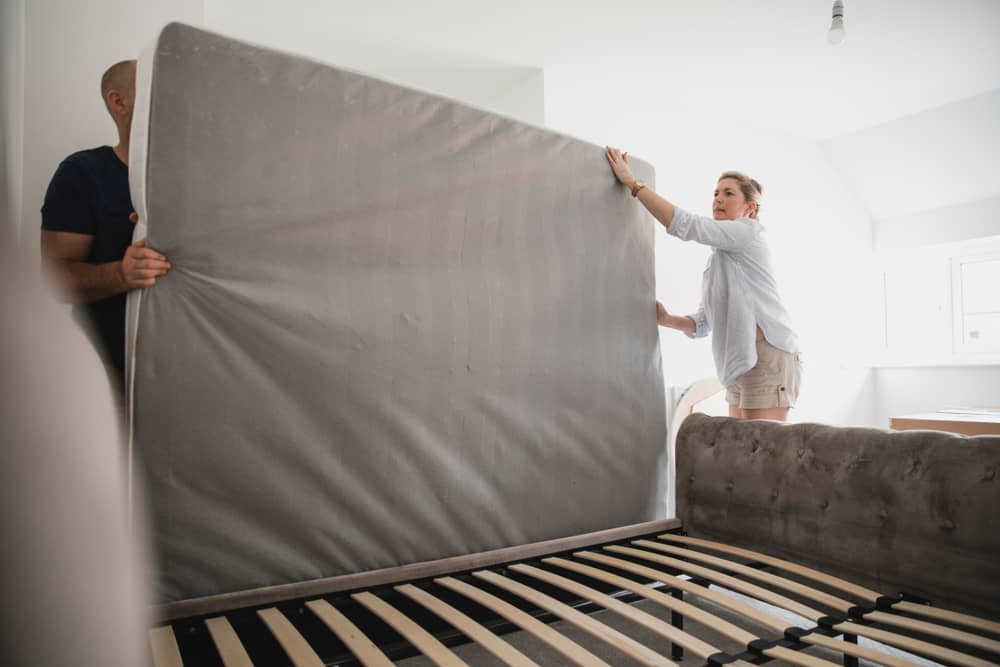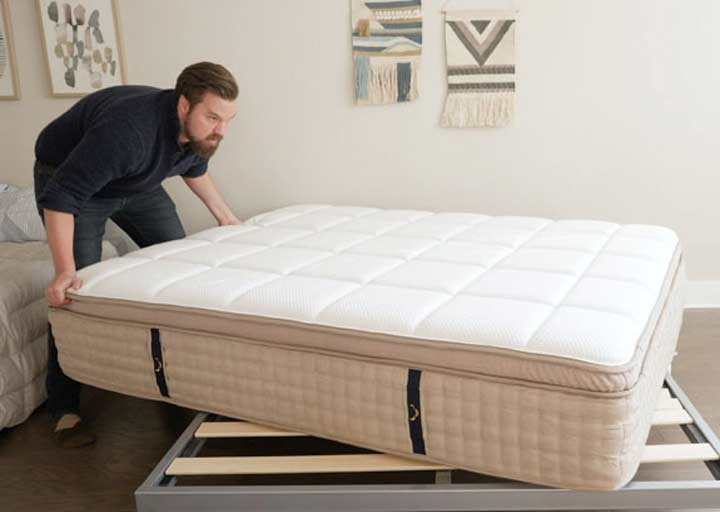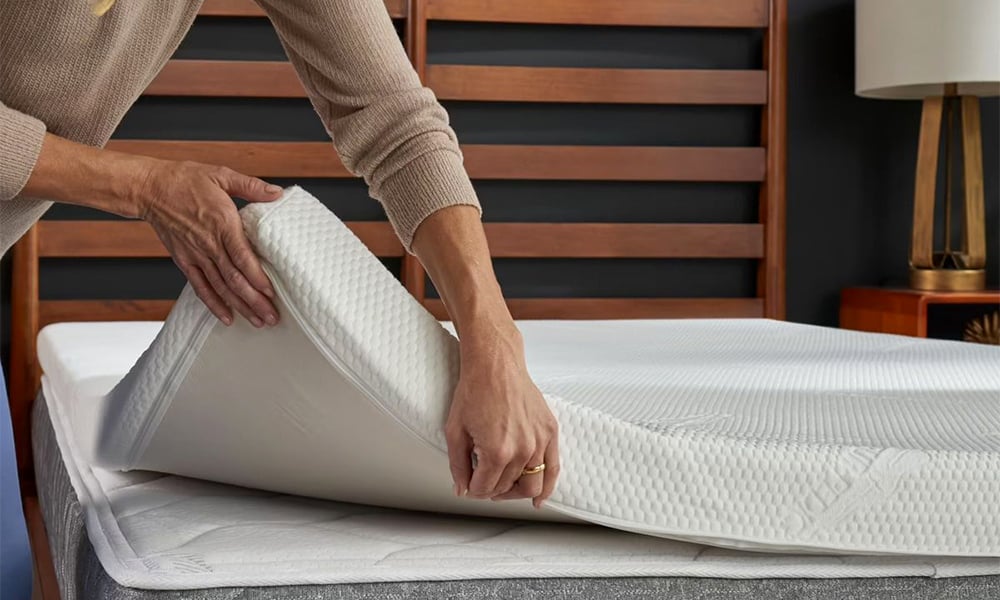How Often to Rotate Mattress: Tips for Prolonging Mattress Lifespan

Regular mattress maintenance is crucial for ensuring a good night’s sleep and extending the lifespan of your mattress.
One simple yet effective method is rotating your mattress periodically. This practice can prevent uneven wear, sagging, and indentations, contributing to a more comfortable and durable sleeping surface.
Importance of Mattress Rotation

Rotating your mattress is a key step in maintaining its condition and comfort over time. This process involves turning the mattress 180 degrees, so the head becomes the foot and vice versa.
By doing so, you distribute wear more evenly across the surface, which can significantly extend the life of your mattress.
The primary reason for rotating it is to even out the wear and tear. Most people tend to sleep in the same spot every night, which can lead to depression and softening in certain areas.
Rotating the mattress ensures that different parts of it bear the brunt of this pressure over time, which can help maintain its original shape and support.
Regular rotation not only evens out wear but can also enhance the comfort and support of your mattress, contributing to a healthier sleep environment. This practice is crucial for preventing the development of dips and sagging that might cause back pain or discomfort.
Interestingly, for those considering new sleep solutions, PayLater Marketplace offers a range of mattresses with specific top layers, such as pillow tops or memory foam.
Recommended Rotation Schedule

The frequency of bed rotation can depend on several factors, including the type you own and how it’s constructed. However, a general guideline can help ensure you’re rotating your mattress enough to reap the benefits without overdoing it.
New mattresses tend to settle and adjust to your body shape more quickly, so it’s advisable to rotate them more frequently in the first few years.
Every three to six months is a good rule of thumb. This helps to ensure that the mattress wears evenly from the start, setting a good foundation for its longevity.
As your mattress ages, you can reduce the frequency of rotations. Every six to twelve months should suffice for older mattresses.
This adjusted schedule still helps in combating uneven wear and sagging but acknowledges that older mattresses have already gone through most of their settling period.
Types of Mattresses and Rotation Needs
Different types of mattresses may have unique requirements when it comes to rotation.
For instance, innerspring mattresses benefit significantly from regular rotation, as it helps maintain their structural integrity and prevents the springs from wearing down unevenly.
Memory foam and latex mattresses, on the other hand, also gain from rotation, though their material inherently resists sagging and indentation to some degree.
Hybrid mattresses, combining springs with foam layers, follow a similar rotation schedule to innerspring models to ensure even wear across both components.
Conclusion

In conclusion, rotating your mattress is a straightforward yet effective strategy for prolonging its lifespan and ensuring consistent comfort and support.
By adhering to a regular rotation schedule, you can prevent uneven wear, maintain the mattress’s shape, and enjoy a rejuvenating sleep for years to come.
Remember, a well-cared-for mattress is key to a good night’s sleep, and simple maintenance steps like rotation can make all the difference.




